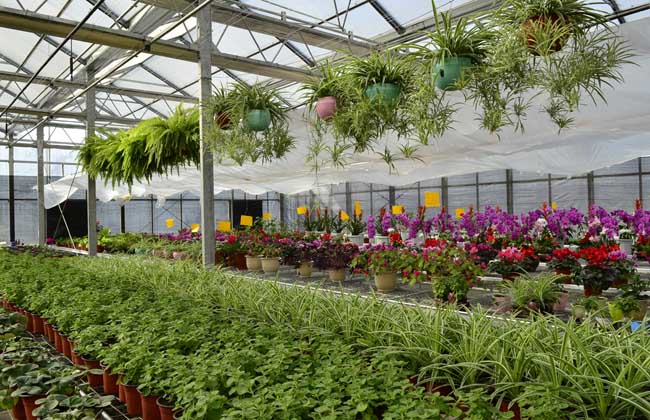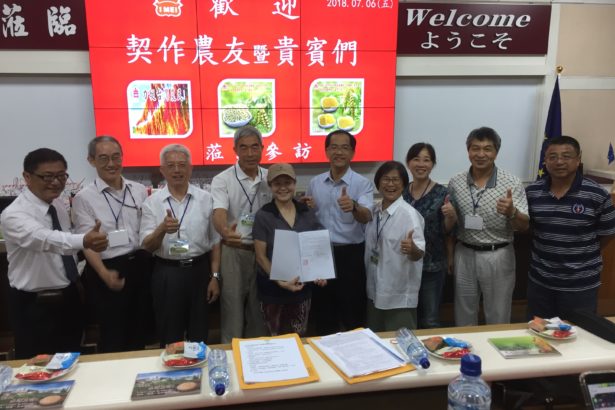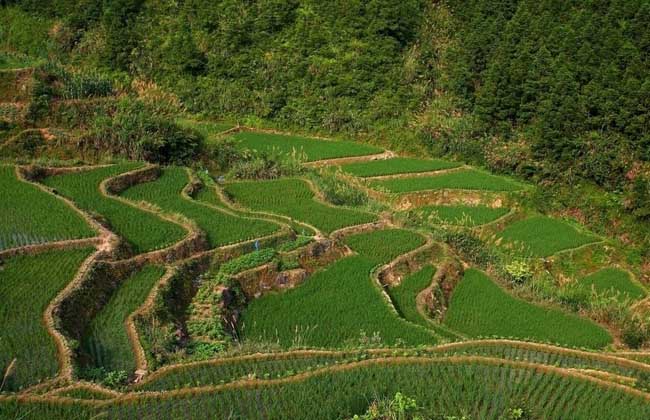The common mode of ecological circular agriculture
Abstract: eco-agricultural model is a kind of agro-ecosystem formed in agricultural production practice, which takes into account the economic, social and ecological benefits of agriculture, and its structure and function are optimized. the whole production process has achieved the reduction of waste emissions, or even zero emissions and resource reuse, and greatly reduced the use of non-renewable energy such as pesticides, veterinary drugs, chemical fertilizers and coal.

Eco-agricultural model is a kind of agro-ecosystem formed in the practice of agricultural production, which takes into account the economic, social and ecological benefits of agriculture, and its structure and function are optimized. the whole production process has achieved the reduction of waste emissions, or even zero emissions and resource reuse, and greatly reduced the use of non-renewable energy such as pesticides, veterinary drugs, chemical fertilizers and coal. Thus the production pattern of cleaner production, low input, low consumption, low emission and high efficiency is formed.
Pig-marsh-vegetable model
The household builds a biogas digester of 6 to 8 cubic meters, raising more than 2 pigs, supporting about 1 mu of open field vegetables, pig manure into the pond, biogas manure to grow vegetables, biogas residue as base fertilizer, biogas liquid as topdressing, through biogas liquid foliar spraying to inhibit insect pests and prevent diseases. The "pig-marsh-greenhouse vegetable" model can also be used to build an 8 cubic meter biogas digester in a 0.8 mu plastic greenhouse to raise 3-5 pigs. Human and animal manure enters the biogas digester, biogas cooks rice or lights and heats up the production in the shed, provides fertilizer source for vegetable production, biogas residue and liquid pass through the pipe network to improve the soil, the production in the shed basically does not apply chemical fertilizer, and the amount of agricultural medicine is also greatly reduced. the yield is increased by 2030%, and the quality is greatly improved. Because the pig house biogas digester is built in the solar greenhouse, the pig grows fast and saves feed, which increases the economic benefit of raising pigs.
Pig-marsh-fruit (fish) model
The household builds a biogas digester, produces 3 to 5 pigs a year, plants 1 to 2 mu of fruit trees, and uses biogas dregs and liquid as quick-acting organic fertilizer for topdressing fruit trees, which can improve fruit quality by 1 to 2 grades, increase production by more than 15%, and reduce production costs by 40%. The "pig-marsh-fish" model can also be adopted, which is mainly developed in fish farmers, in which human and animal feces are fed to fish after fermentation, biogas dregs are used as pond base fertilizer, and biogas liquid is used as topdressing, so as to reduce bait cost and reduce the amount of chemical fertilizer used in fish ponds to control fish diseases.
"biological chain" model
Build an 8-10 cubic meter biogas digester, raise 100 chickens, 3-5 pigs, raise 3 mu of surface fish, and grow 5 mu of farmland. Biogas is used as an intermediate link to connect chickens, pigs, fish and crops to form a closed biological chain circulation system. The specific contents are as follows: feed → to raise chickens (feed pigs) → chicken manure (pig manure and urine) into biogas digester, biogas as daily energy, biogas slurry and biogas dregs to feed fish → fish pond mud and part of biogas dregs fertile field. This model has the characteristics of developing multiple industries simultaneously and complementing each other.
Seed-raise-plus model
The seed-raise-plus model is suitable for farmers engaged in the processing of traditional agricultural products, such as making tofu, grinding powder and so on. Feed pigs with processed leftovers (such as bean dregs, powder dregs), pig manure into the marsh, biogas for planting pollution-free rice, vegetables, etc., and biogas for cooking, processing, lighting.
Fish-mulberry-chicken model
Fish are raised in the pond, mulberry trees are planted around the pond, and chickens are raised in the mulberry garden. The silt of fish pond and chicken manure are used as mulberry fertilizer, silkworm pupa and mulberry leaves are fed to chicken, and silkworm manure is fed to fish, so that mulberry, fish and chicken form a good ecological cycle. The experiment shows that feeding silkworm with mulberry leaves and fish with silkworm manure can increase fish yield by 25 kg and annual chicken manure output by 1200 kg, which is equivalent to applying standard nitrogen fertilizer and phosphorus fertilizer to mulberry garden.
Chicken-pig-fish model
Feed to chickens, chicken manure to pigs, pig manure to fish after fermentation, pond mud as fertilizer. According to the calculation of raising 100 chickens a year, feeding chicken manure to pigs can increase the yield of pork by 100kg, and feeding pig manure to fish can increase the catch of adult fish by 50kg. With pond mud as fertilizer, the total income can be increased by 1000 yuan. Abstract: eco-agricultural model is a kind of agro-ecosystem formed in agricultural production practice, which takes into account the economic, social and ecological benefits of agriculture, and its structure and function are optimized. the whole production process has achieved the reduction of waste emissions, or even zero emissions and resource reuse, and greatly reduced the use of non-renewable energy such as pesticides, veterinary drugs, chemical fertilizers and coal.
Cattle-fish model
The weeds, straw or forage grass were ammoniated and fed to cattle, cow manure was fermented to fish, and pond mud was used as farmland fertilizer. The dung of 2 cattle can be fed to 1 mu of pond fish, with an annual increase of 200 kg of adult fish.
Cow-mushroom-earthworm-chicken-pig-fish model
Use weeds, straw or forage to feed cattle, cow dung as mushroom culture material, mushroom scraps to propagate earthworms, earthworms to chickens, chicken manure to fish after fermentation, and fish pond sludge as fertilizer.
Livestock-biogas-edible fungi-earthworms-chicken-pig-fish model
After ammoniation, alkalization or saccharification, the straw was fed to livestock, livestock manure and feed residue to produce biogas or to cultivate edible fungi, edible fungus scraps to propagate earthworms, earthworms to chickens, chicken manure to pigs after fermentation, fish after pig manure fermentation, biogas dregs and pig manure to raise earthworms, and the residues were raised for fish or fertilizer.
Livestock-maggot-chicken-cow-fish model
The droppings of livestock are fed with fly maggots, which are high-protein feed for chickens, fermented chicken manure to cattle, cow manure to fish, and fish pond sludge is a high-quality organic fertilizer.
Chicken-pig model
Feed is fed to chickens, chicken manure is recycled and fed to pigs, and pig manure is used as farmland fertilizer. One fat pig can be raised for every 40 broilers in one year (from weaning to fattening to 75kg).
Chicken-pig-cow model
Feed to chickens, chicken manure to pigs after regeneration, cattle manure to cattle after treatment, and cow manure as farmland fertilizer. In this way, the contradiction among human, animal and grain can be greatly reduced, and the feed cost can be effectively reduced.
Related
- A course of planting techniques and methods on how to grow carrots
- How to plant the latest tulips?
- Is it better to pick tea in the morning or in the afternoon? When is the best time for tea to be picked? what is the third or fifth tea?
- Launch Yuanxiao Happy combination Haocha + Tea Yuan healthy Taste
- Penghu Tourism "Fireworks 20 Parade with You"
- 2022 West Lake Happiness holds "Digital Revitalization Voucher" and draws iphone13 and laptop.
- Banqiao Fuzhou social houses are designed to change start-up combined with police elimination to create a safe and livable environment
- The convenient measure of "mechanical weeding" in Xinbei has been abused and the Agriculture Bureau has imposed heavy penalties on the illegal land consolidation.
- Changgeng University Joins Hands with Four Memory Factories to Rescue Memory Talent Shortage
- The list of Taiwan's top 100 MVP managers is listed by the Director-General of the Farmers' Association of Sanxia District.



